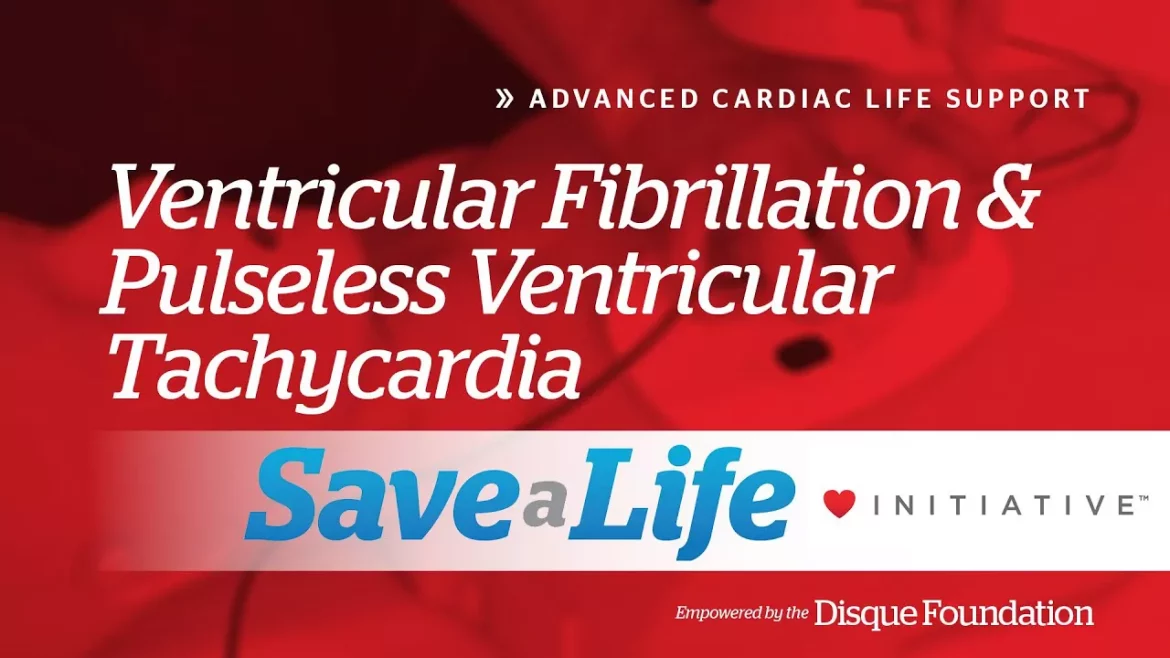Cardiovascular diseases (CVD) are a leading cause of morbidity and mortality worldwide, with arrhythmias being a significant subset of these conditions. Arrhythmias are disturbances in the normal rhythm of the heart, and while many are benign, some can be life-threatening. Understanding these fatal arrhythmias, their mechanisms, risk factors, and treatment options is crucial for both healthcare providers and patients.
What Are The 4 Fatal Arrhythmias?
1. Ventricular Fibrillation (VF)
Ventricular fibrillation (VF) is one of the most dangerous arrhythmias and is often associated with sudden cardiac death. In VF, the heart’s ventricles quiver chaotically rather than contracting in a coordinated manner, leading to an immediate cessation of effective blood circulation.
SEE ALSO: 7 Drugs to Treat Premature Ventricular Contractions
Mechanism and Causes:
VF typically arises from the presence of multiple reentrant circuits within the ventricles, which are often precipitated by underlying heart conditions such as myocardial infarction (heart attack), cardiomyopathy, or severe electrolyte imbalances.
The chaotic electrical activity prevents the ventricles from pumping blood effectively, leading to a dramatic drop in blood pressure and subsequent cardiac arrest.
Symptoms:
The onset of VF is often sudden and can occur without warning. Symptoms include:
- Sudden collapse
- Loss of consciousness
- No pulse or breathing
Immediate medical intervention is crucial for survival.
Treatment:
The primary treatment for VF is immediate defibrillation. Automated external defibrillators (AEDs) can deliver a shock to the heart to restore normal rhythm. Cardiopulmonary resuscitation (CPR) is also essential until defibrillation can be performed. Long-term management may involve the use of implantable cardioverter-defibrillators (ICDs) and medications to prevent recurrence.
2. Ventricular Tachycardia (VT)
Ventricular tachycardia (VT) is another potentially fatal arrhythmia characterized by a rapid heart rate originating from the ventricles. VT can degenerate into VF, making it a critical condition requiring prompt attention.
Mechanism and Causes:
VT often results from reentrant circuits within the ventricles or abnormal automaticity. It can be associated with ischemic heart disease, structural heart abnormalities, or genetic conditions such as Long QT syndrome and Brugada syndrome.
Symptoms:
The symptoms of VT can vary depending on the rate and duration of the arrhythmia but may include:
- Palpitations
- Dizziness or lightheadedness
- Shortness of breath
- Chest pain
- Syncope (fainting)
Treatment:
Acute management of VT includes antiarrhythmic medications such as amiodarone or lidocaine and, in hemodynamically unstable patients, electrical cardioversion. Long-term treatment may involve ICD implantation, catheter ablation to disrupt the reentrant circuits, and medications to control heart rate and rhythm.
3. Atrial Fibrillation (AF) with Rapid Ventricular Response
Atrial fibrillation (AF) itself is not typically fatal, but when accompanied by a rapid ventricular response, it can lead to severe complications such as heart failure or ischemic stroke.
Mechanism and Causes:
AF involves disorganized electrical activity in the atria, leading to rapid and irregular atrial contractions. This chaotic activity can result in a rapid ventricular response if the atrioventricular (AV) node conducts these signals quickly. Common causes of AF include hypertension, coronary artery disease, valvular heart disease, and hyperthyroidism.
Symptoms:
Symptoms of AF with rapid ventricular response can include:
- Palpitations
- Shortness of breath
- Chest pain
- Fatigue
- Lightheadedness
Treatment:
The management of AF with rapid ventricular response focuses on controlling the heart rate and restoring sinus rhythm.
Medications such as beta-blockers, calcium channel blockers, and antiarrhythmics are commonly used. In some cases, electrical cardioversion or catheter ablation may be necessary. Anticoagulation therapy is also important to reduce the risk of stroke.
4. Torsades de Pointes
Torsades de Pointes is a specific form of polymorphic ventricular tachycardia that can lead to sudden cardiac death if not promptly treated. It is often associated with a prolonged QT interval on the electrocardiogram (ECG).
Mechanism and Causes:
Torsades de Pointes is usually triggered by factors that prolong the QT interval, such as certain medications (e.g., antiarrhythmics, antibiotics, antipsychotics), electrolyte imbalances (hypokalemia, hypomagnesemia), and congenital long QT syndrome. The prolonged QT interval predisposes the heart to early afterdepolarizations, which can initiate this distinctive twisting pattern of the QRS complexes on the ECG.
Symptoms:
Symptoms are similar to other ventricular arrhythmias and include:
- Palpitations
- Dizziness
- Syncope
- Sudden cardiac arrest in severe cases
Treatment:
Acute management of Torsades de Pointes includes magnesium sulfate administration, which can help stabilize the heart’s electrical activity. Isoproerenol or overdrive pacing may be used to shorten the QT interval. In cases related to medication or electrolyte imbalances, correcting the underlying cause is essential. Long-term management may involve the use of ICDs in high-risk patients.
Prevention And Risk Management
Preventing fatal arrhythmias involves managing risk factors and underlying conditions that can predispose individuals to these life-threatening events.
Lifestyle Modifications:
Adopting a heart-healthy diet rich in fruits, vegetables, whole grains, and lean proteins
Engaging in regular physical activity
Maintaining a healthy weight
Avoiding tobacco and limiting alcohol consumption
Managing stress through techniques such as mindfulness and relaxation exercises
Medical Management:
Regular monitoring and control of blood pressure, cholesterol levels, and blood glucose
Adherence to prescribed medications for conditions like hypertension, diabetes, and coronary artery disease
Routine check-ups with a healthcare provider for early detection and management of potential heart problems
Advanced Interventions:
In patients at high risk of arrhythmias, ICDs can provide life-saving interventions by delivering shocks to correct abnormal heart rhythms Catheter ablation procedures can be effective in treating certain types of arrhythmias by eliminating the abnormal electrical pathways in the heart Genetic testing and counseling may be beneficial for individuals with a family history of congenital arrhythmia syndromes
Conclusion
Fatal arrhythmias such as Ventricular Fibrillation, Ventricular Tachycardia, Atrial Fibrillation with Rapid Ventricular Response, and Torsades de Pointes pose significant risks to individuals with cardiovascular disease. Understanding the mechanisms, symptoms, and treatments of these arrhythmias is crucial for effective management and prevention. Through a combination of lifestyle changes, medical management, and advanced interventions, the risks associated with these life-threatening conditions can be mitigated, ultimately improving patient outcomes and reducing the incidence of sudden cardiac death.

